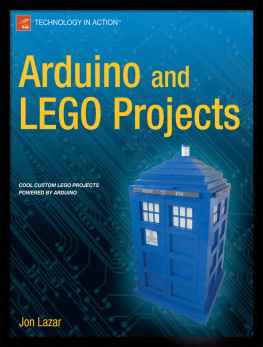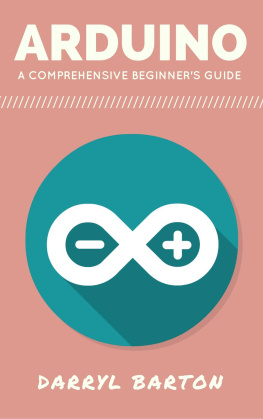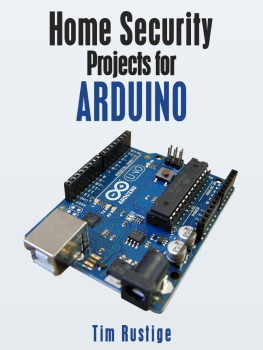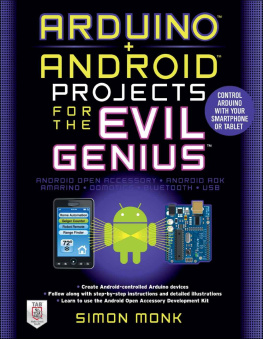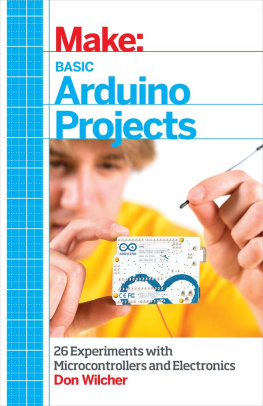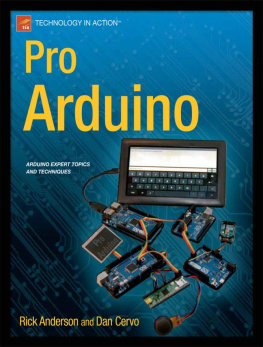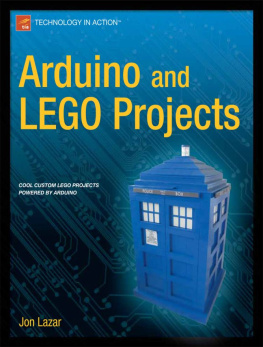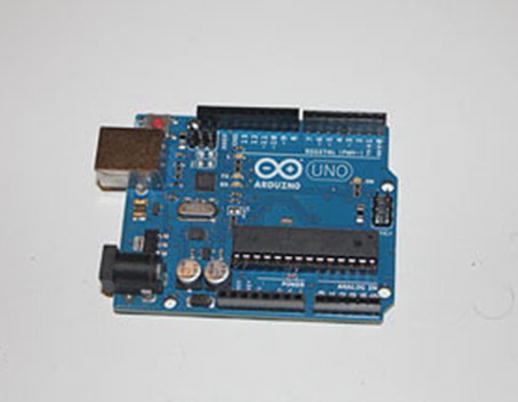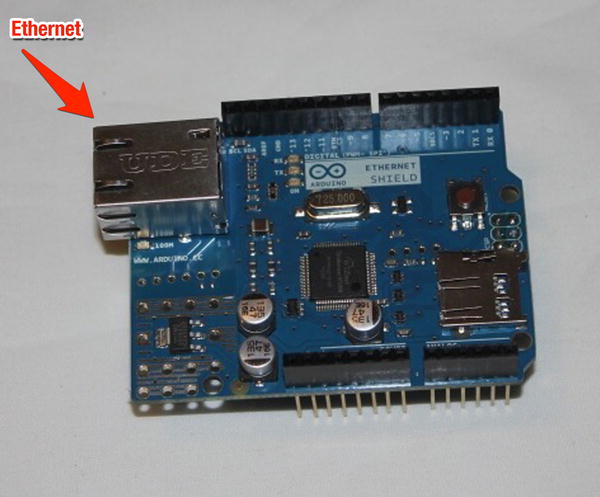For years LEGO has produced their own computer based system known as Mindstorms. It gave a computer brain to the plastic LEGO bricks that had been around for decades. While Mindstorms has advanced in the 15 years since it was introduced, it was still limited based on the size of the LEGO Intelligent Brick and the available sensors and motors. An alternative to using the LEGO Mindstorms is the Arduino microprocessor, a small computer that can make use of any electrical components with some programming.
Introducing the Arduino
An Arduino (as seen in Figure ) is an open source microcontroller that allows for programming and interaction; it is programmed in C/C++ with an Arduino library to allow it to access the hardware. This allows for more flexible programmability and the ability to use any electronics that can interface with the Arduino. Because the Arduino is open source, the plans for the circuits are available online for free to anyone who wants to use and create their own based on the schematics, as long as they share what they create. This allows for a lot of customizability in projects, since people have built Arduinos of different sizes, shapes, and power levels to control their projects.
Figure 1-1.
The Arduino microcontroller
The main advantages of using the Arduino over LEGOs own motor systems are the open source base, the expandability, and the sizes. With LEGOs system, the user is locked into the pieces LEGO created. This can be a hindrance with smaller projects where the Mindstorms NXT Intelligent Brick can be too large to easily incorporate or hide the intelligence behind the project. With the smaller Arduino circuit board, less clearance is required to hold the circuit board, which means more flexibility in the design of the project. A comparison of the Arduino and the LEGO NXT brick can be seen in Figure .
Figure 1-2.
The Arduino and the LEGO Mindstorms NXT Intelligent Brick
The Arduino itself may not be capable of fulfilling all the activities that you would like to carry out with it, but there are circuit boards known as shields that snap on top of the Arduino circuit board to expand the usability of the Arduino. Allowing the use of motors, adding Internet connectivity, making sounds with.wav files, and other activities can be triggered through the use of these add-on boards, thus allowing the Arduino to be programmed to carry out tasks it could not without them. As an example, Figure shows an Ethernet shield that allows the Arduino to connect to the Internet.
Figure 1-3.
An Ethernet shield to allow the Arduino to talk to the Internet
Your First Arduino Program
Most commonly, when someone tries out a new computer language, they make the words Hello World appear on the screen. The Arduino version of this is to make a light-emitting diode (LED) blink. By plugging the LED into two of the ports on the Arduino and writing a simple program, the Arduino can turn the light on and off.
The first step is to put the LED into the Arduino. LEDs are specific to the way they are used. The LED needs to be plugged in so that the longer end goes into a numbered pin and the shorter pin into the ground pin, or the LED will not light up. Figure shows the longer side in the socket labeled 13 and the shorter side in the ground.
Figure 1-4.
The LED plugged into the Ardunio
Once the LED is firmly placed in the Arduino, the next step is to connect it to a computer via USB cable. The computer must have the Arduino software installed in order to program the Arduino. The software can be downloaded for free at arduino.cc in the download section for your computer operating system of choice. Once it is downloaded and installed, open the Arduino software. The following program can be found in File Examples 01.Basics Blink or it can be entered by hand, as shown in Listing 1-1.
Listing 1-1.Basic Blink Program
/*
Blink
Turns on an LED on for one second, then off for one second, repeatedly.
This example code is in the public domain.
*/
// Pin 13 has an LED connected on most Arduino boards.
// give it a name:
int led = 13;
// the setup routine runs once when you press reset:
void setup() {
// initialize the digital pin as an output.
pinMode(led, OUTPUT);
}
// the loop routine runs over and over again forever:
void loop() {
digitalWrite(led, HIGH); // turn the LED on (HIGH is the voltage level)
delay(1000); // wait for a second
digitalWrite(led, LOW); // turn the LED off by making the voltage LOW
delay(1000); // wait for a second
}
The code in Listing 1-1 is the most basic program for an Arduino. It is read by the Arduino from the top down. The first thing in the program is a global variable definition for the pin that has the LED. A global variable is defined outside the setup() and loop() functions and can be accessed from anywhere in the program. The line int led=13; defines the global variable named led to be an integer with the value of 13. Whenever the word led is used, the program will interpret it as the number 13. Since the variable is defined before the words void setup(); it is what is referred to as a global variable, which means any part of the program can access and make changes to it. If the variable had been defined in the setup or loop sections (as defined below), it would only be a local variable that could only be accessed by that section of code. It is worth noting that anything between the symbols /* and */ or on a line after // are comments and will be ignored by the computer when it reads the program.
// the setup routine runs once when you press reset:
void setup() {
// initialize the digital pin as an output.
pinMode(led, OUTPUT);
}
Anything between the braces after setup() will be executed when the program first runs. Anything in there will be run only once and never be looked at again. In this case, it using pinMode to tell the Arduino that it will be using pin 13, where you defined led , to be used to send a signal out. It is notable that the pins can be used for either input or output, but must be defined to do so.

